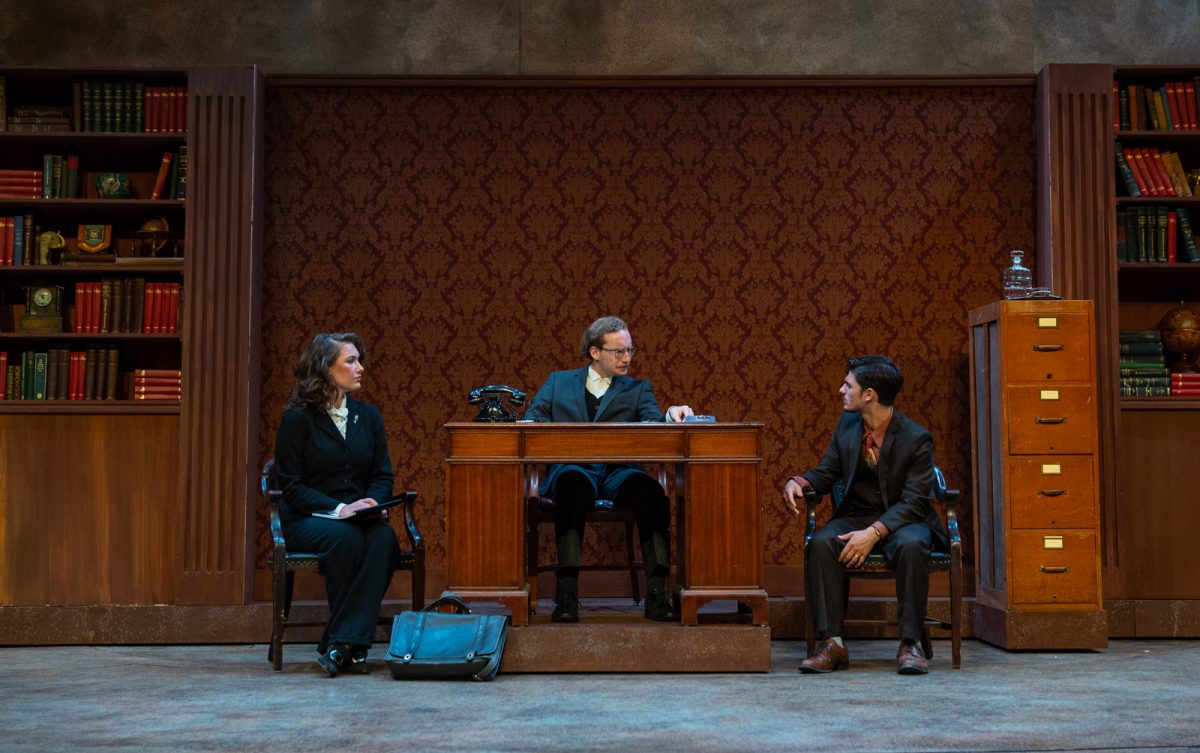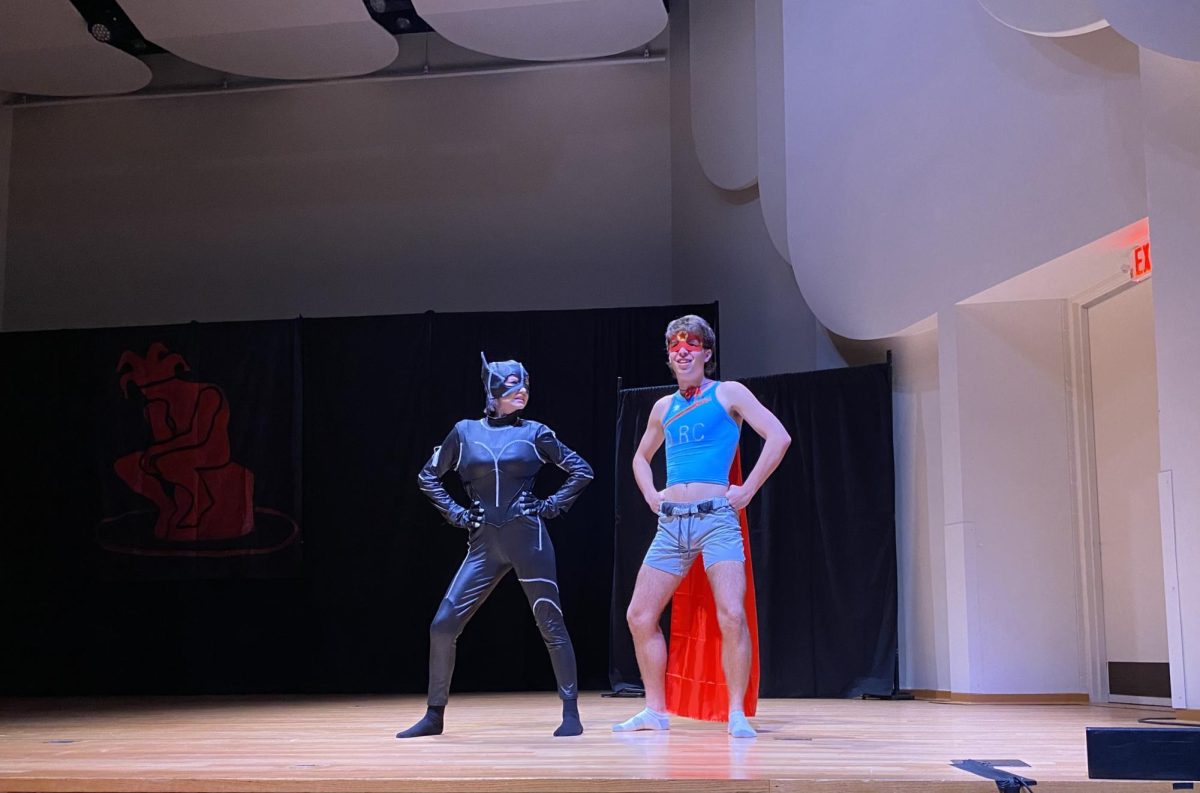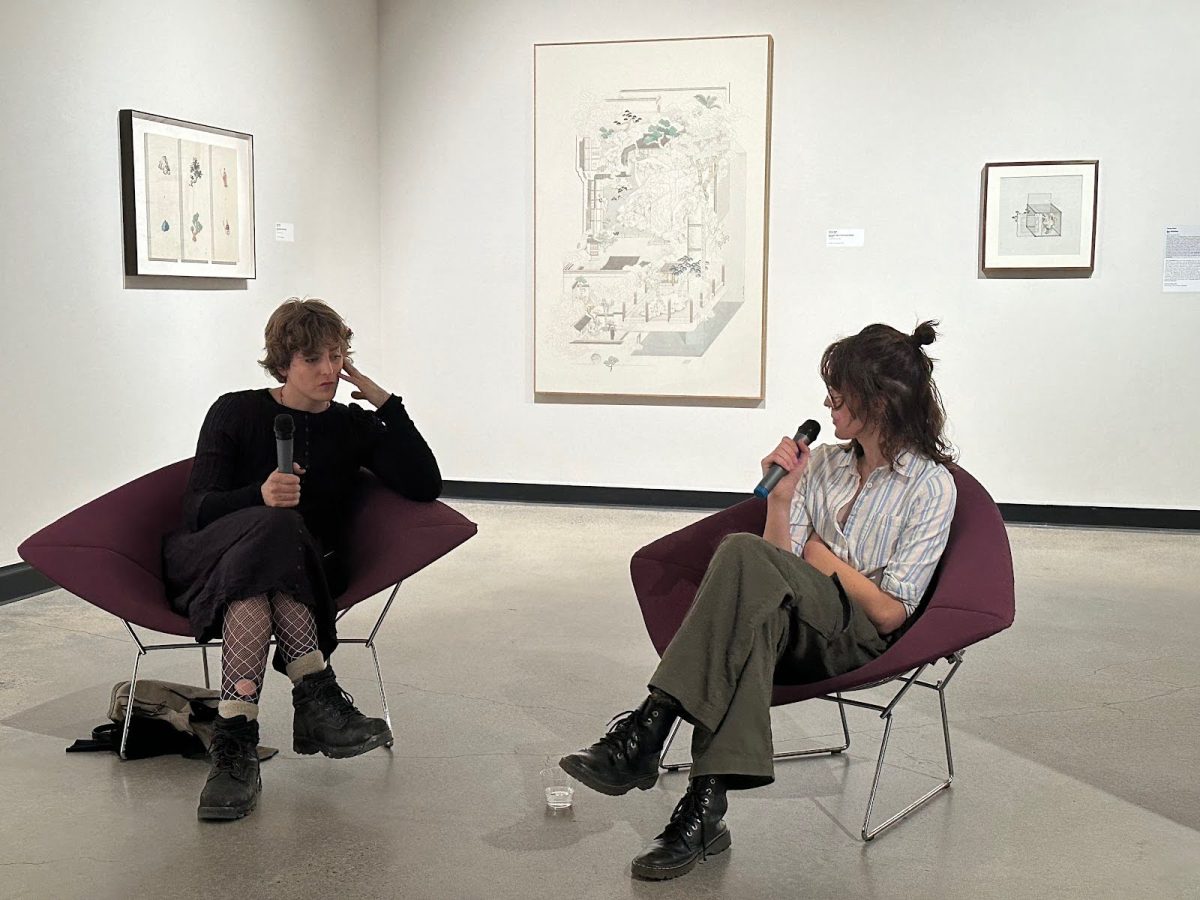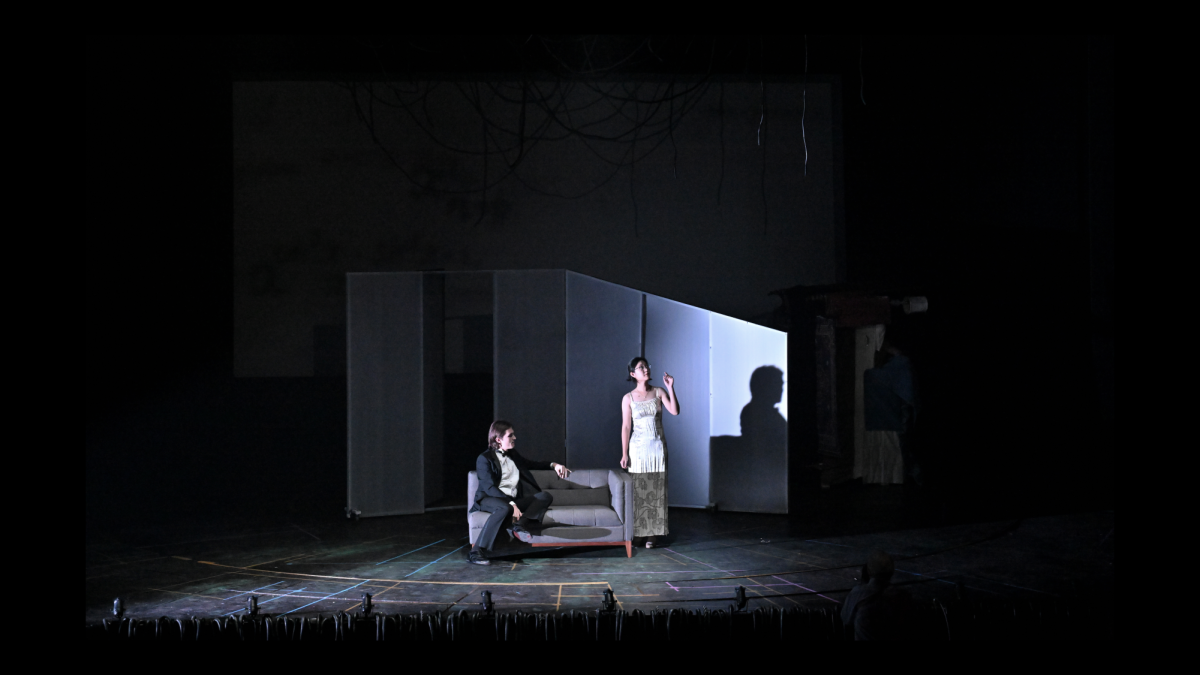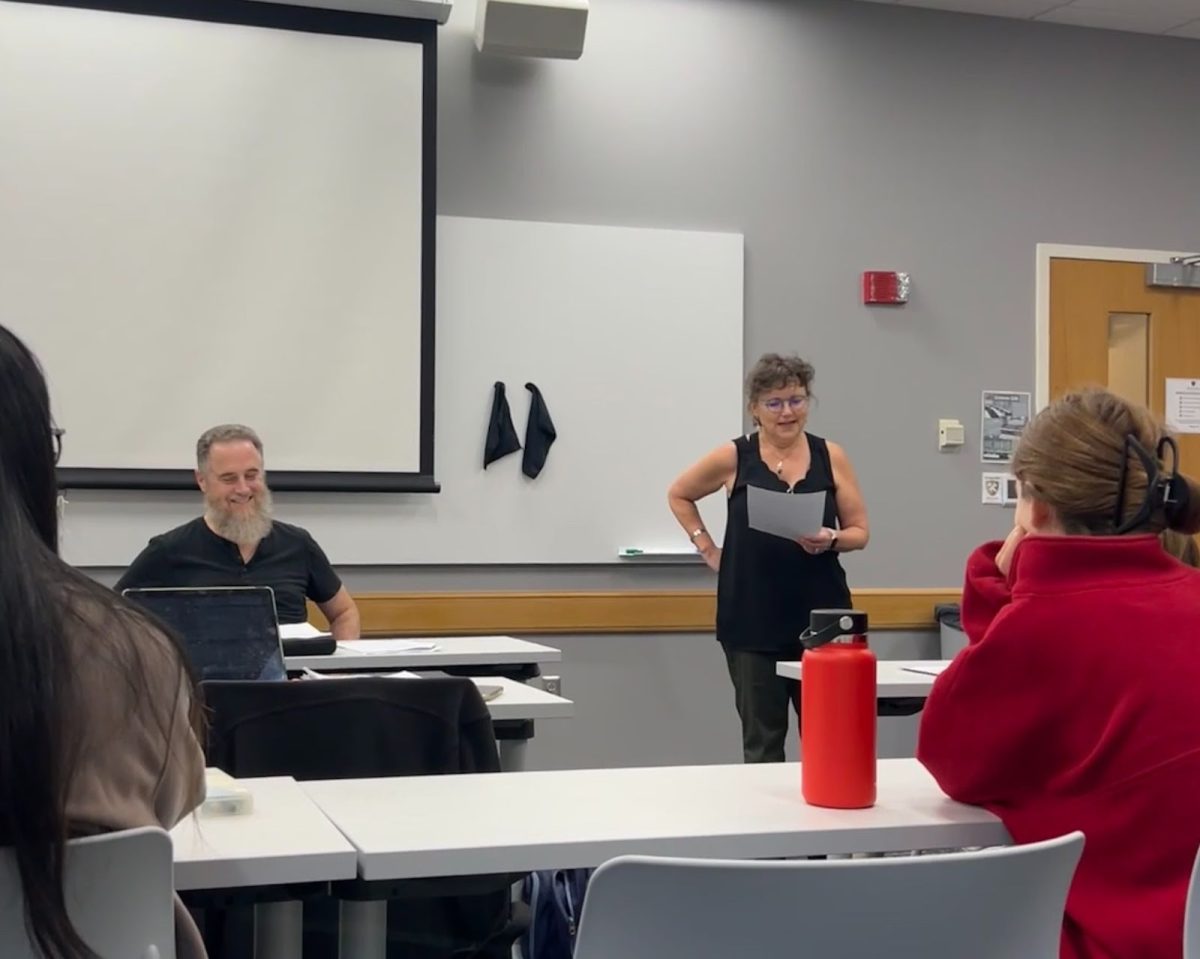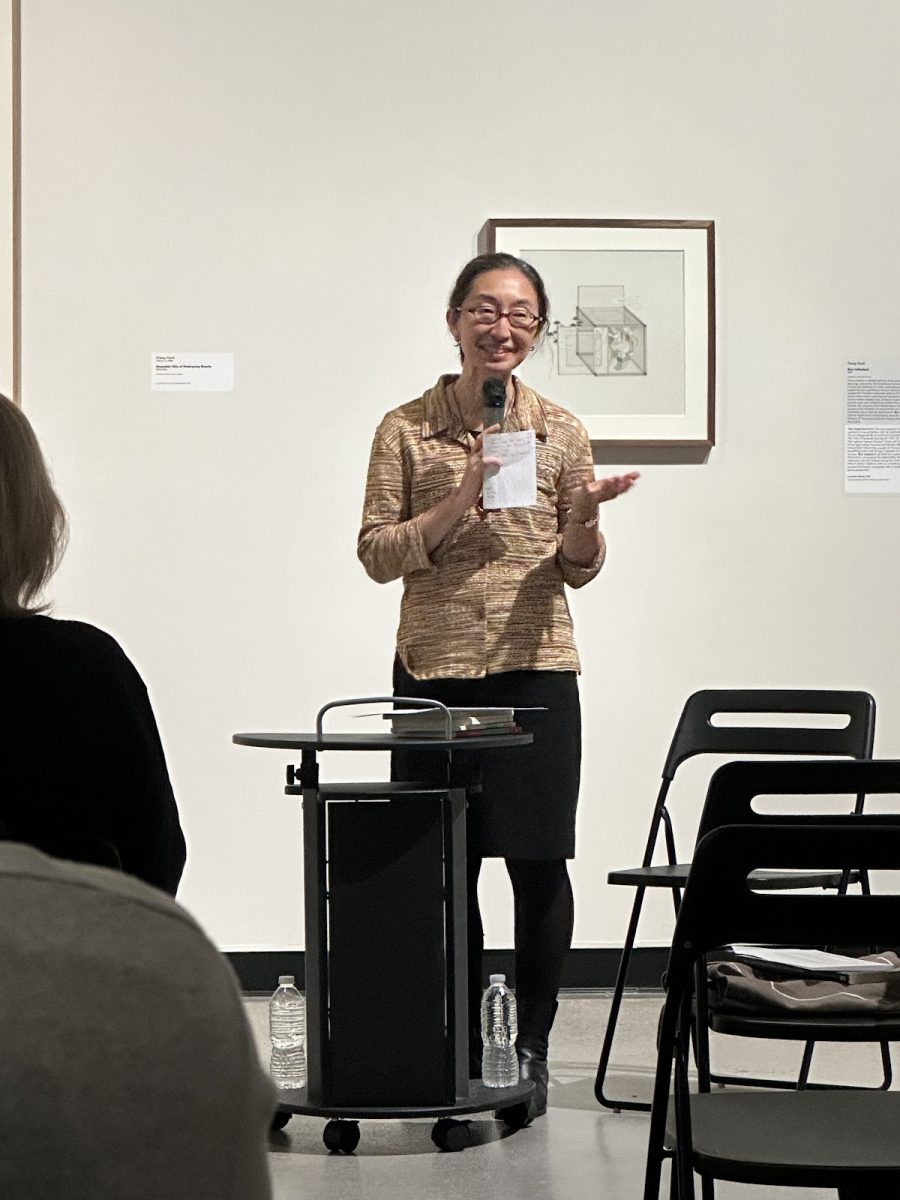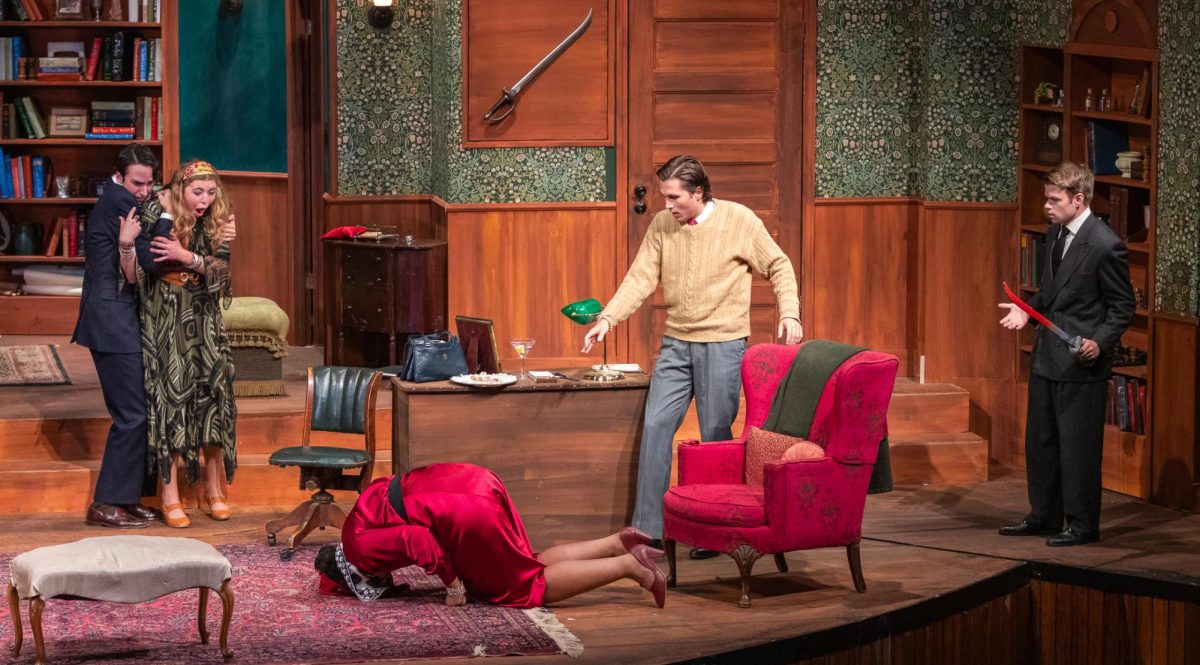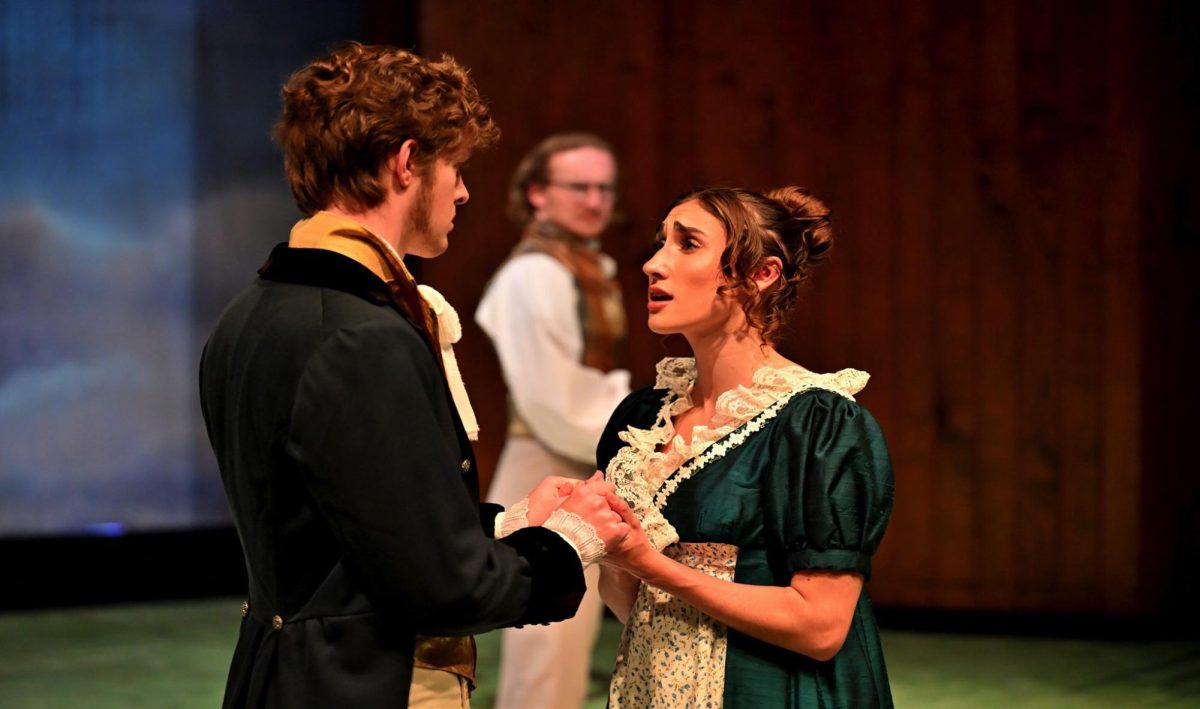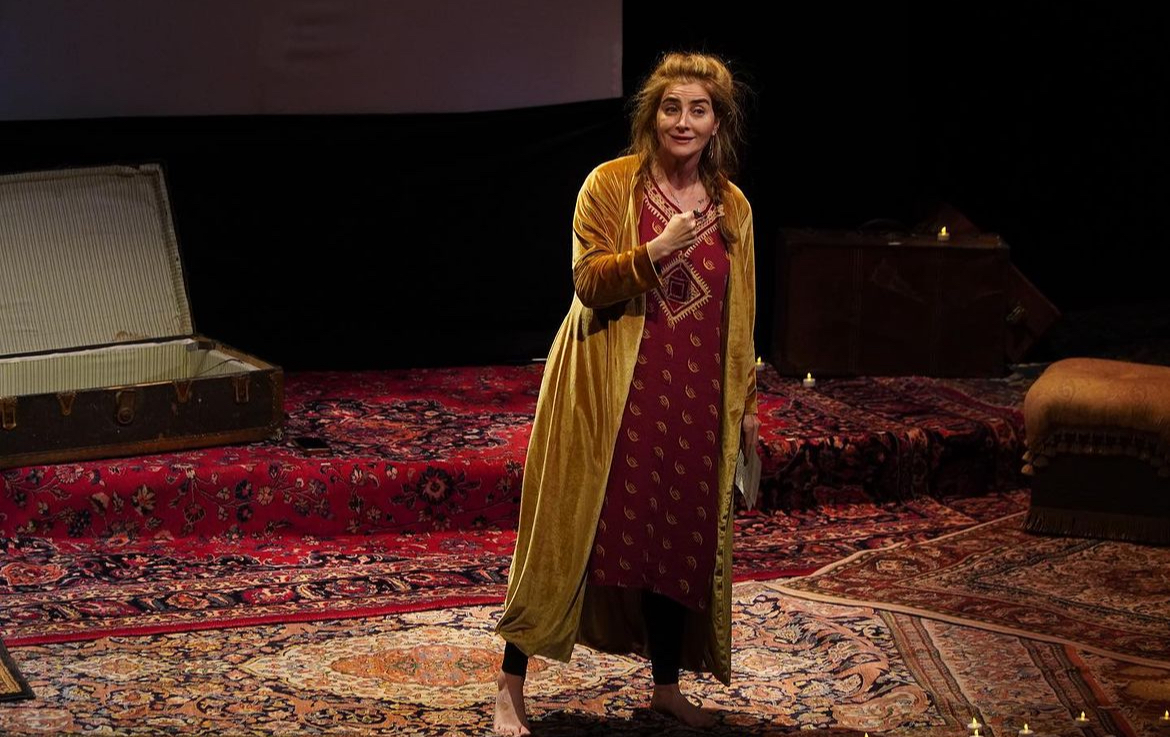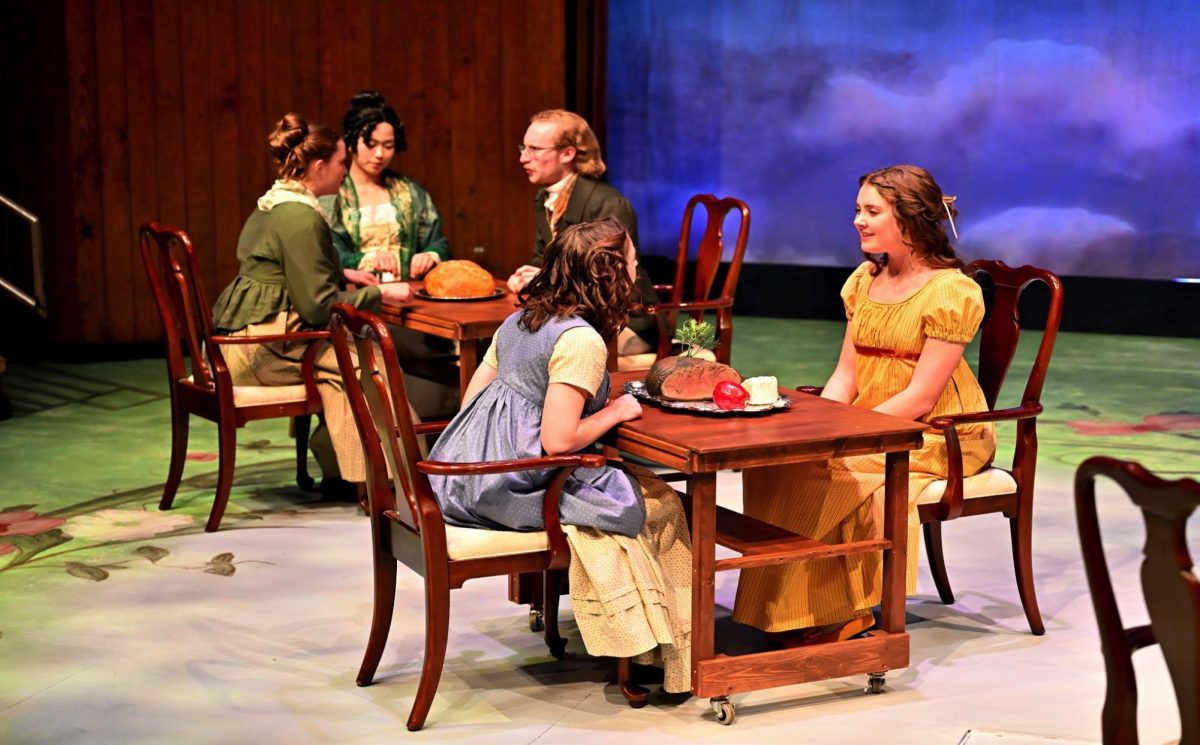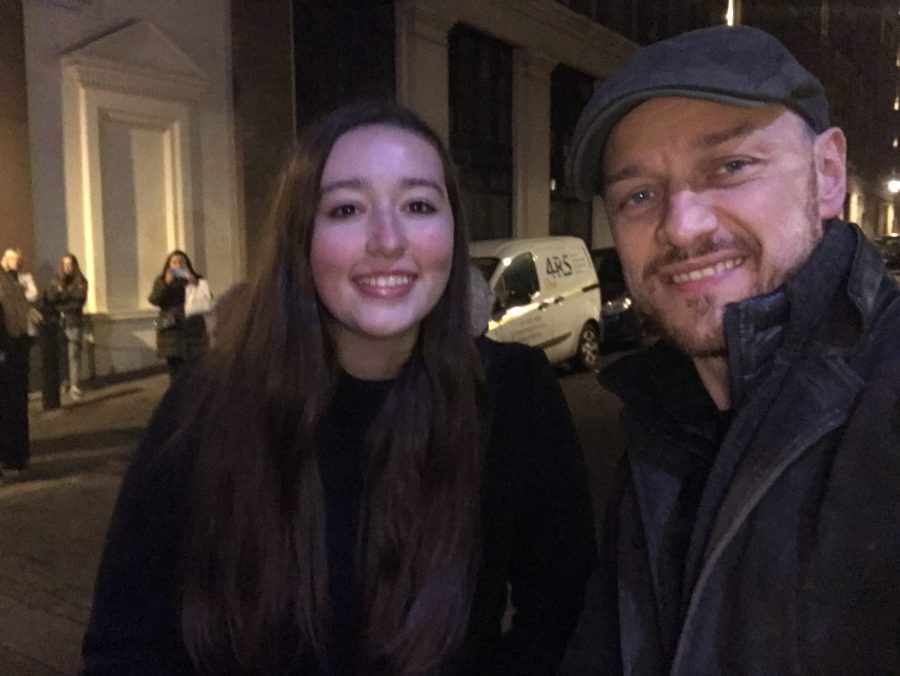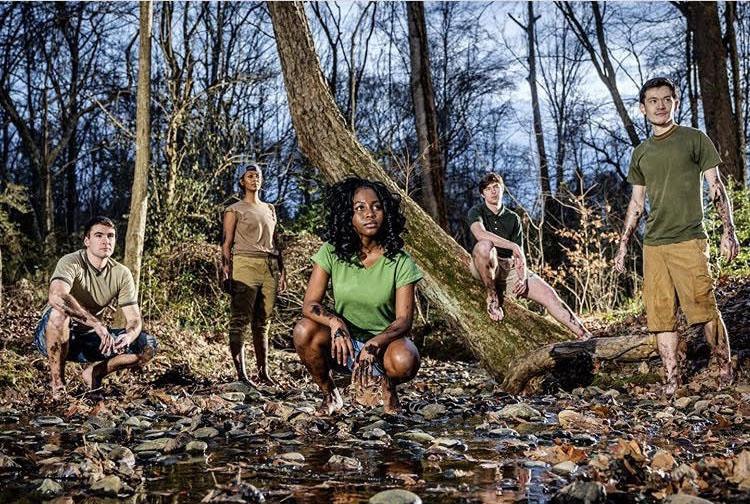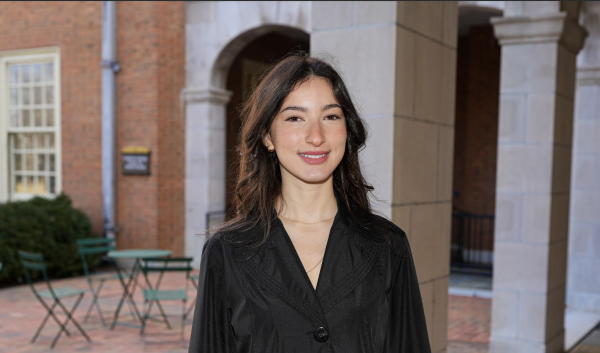Nestled in the confines of Scales Fine Arts Center, the Tedford Stage emanated an uncanny, almost sinister aura on the opening night of “Witness for the Prosecution.” When the show began, jazz noir emanated through the room. The chambers of Sir Wilfred Robarts’ defense counsel were bathed in ambient blue light, lending it a touch of Lynchian intrigue. Against this backdrop, the court convened to try Leonard Vole for the murder of the reclusive Emily French.
Defense attorney Robarts was portrayed with exceptional finesse by senior Evan Souza, while senior Nathaniel Avery’s towering presence as the prosecuting attorney, Mr. Meyers, symbolized the unwavering strength and resilience of justice. “Witness for the Prosecution” emerged as a production steeped in a shadowy blend of truth and deceit, culminating in a shocking and unforgettable finale.
Robarts proved to be a captivating audience favorite. The audience first encounters him in his office, framed behind his desk. This introduction, coupled with Souza’s inquisitive countenance and judicious austerity, instantly transformed Souza into a living embodiment of his role.
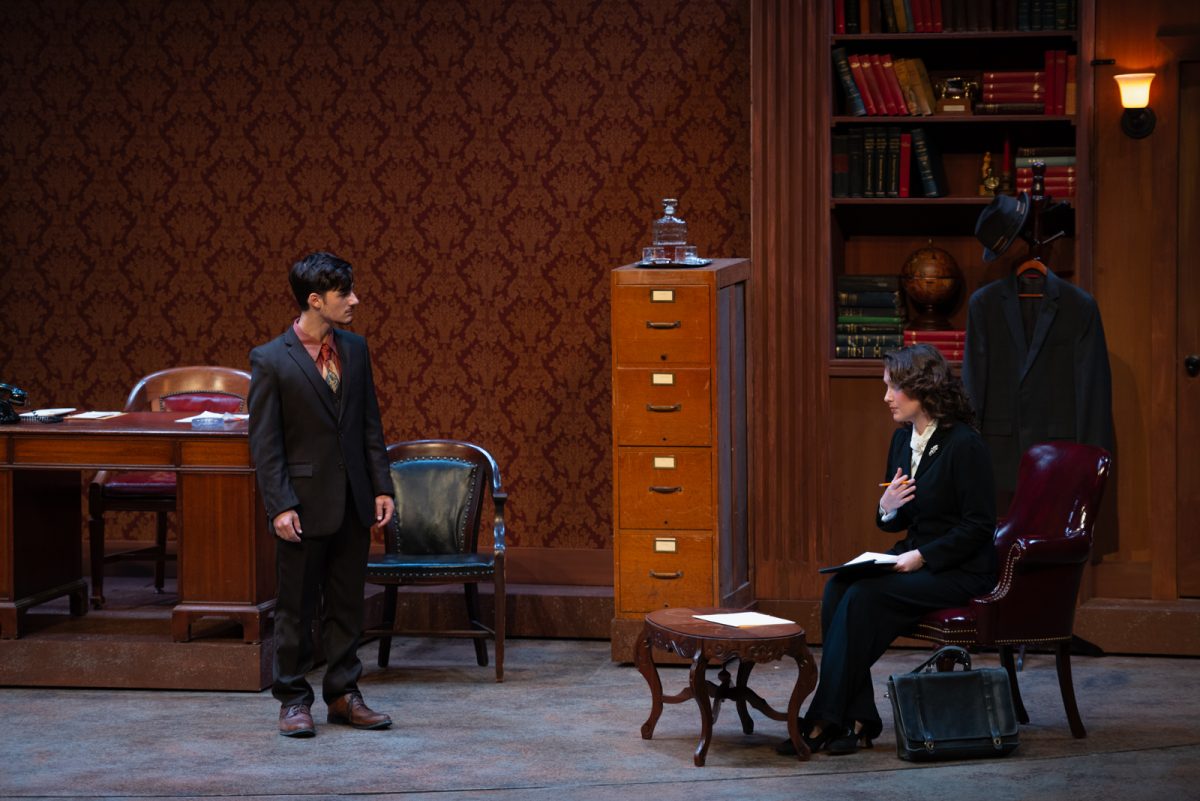
The play’s central suspect, Leonard Vole, portrayed by sophomore Joe Bruno, lent a discomforting presence, effectively embodying the very qualities of a voleish, or “rodent-like,” nature. Leonard Vole’s inclination to navigate life with a penchant for deceit and manipulation was evident early on. Trapped in a cycle of opportunism, he remains incapable of rising to the occasion with honor and integrity, a flaw that sets the stage for the dramatic twists and turns that follow.
Romaine Vole, portrayed by sophomore Lauren Veldhuizen, boasted a compelling East German accent, a vivid reminder of her past trials under Cold War-era Berlin. Alongside Romaine Vole, Janet Mackenzie, skillfully embodied by senior Alexandra Battisti, stands as another pivotal suspect who undergoes rigorous cross-examination. Battisti’s performance as the eccentric and unyielding Mackenzie was carried out with precision, down to her bellowing Scottish accent and unrelenting animosity toward Leonard Vole. The play crescendos to its climax, driven by the gradual unveiling of Leonard Vole’s concealed secrets.
In the realm of hair and makeup, the crew under the expert guidance of sophomore Maggie Payne masterfully transports the audience to the glamorous 1950s. The characters effortlessly embody the iconic beauty trends of the time with a grace that harkens back to Hollywood’s golden age. Their lips are adorned with vibrant shades of rouge, paying homage to screen legends like Marilyn Monroe and Elizabeth Taylor.
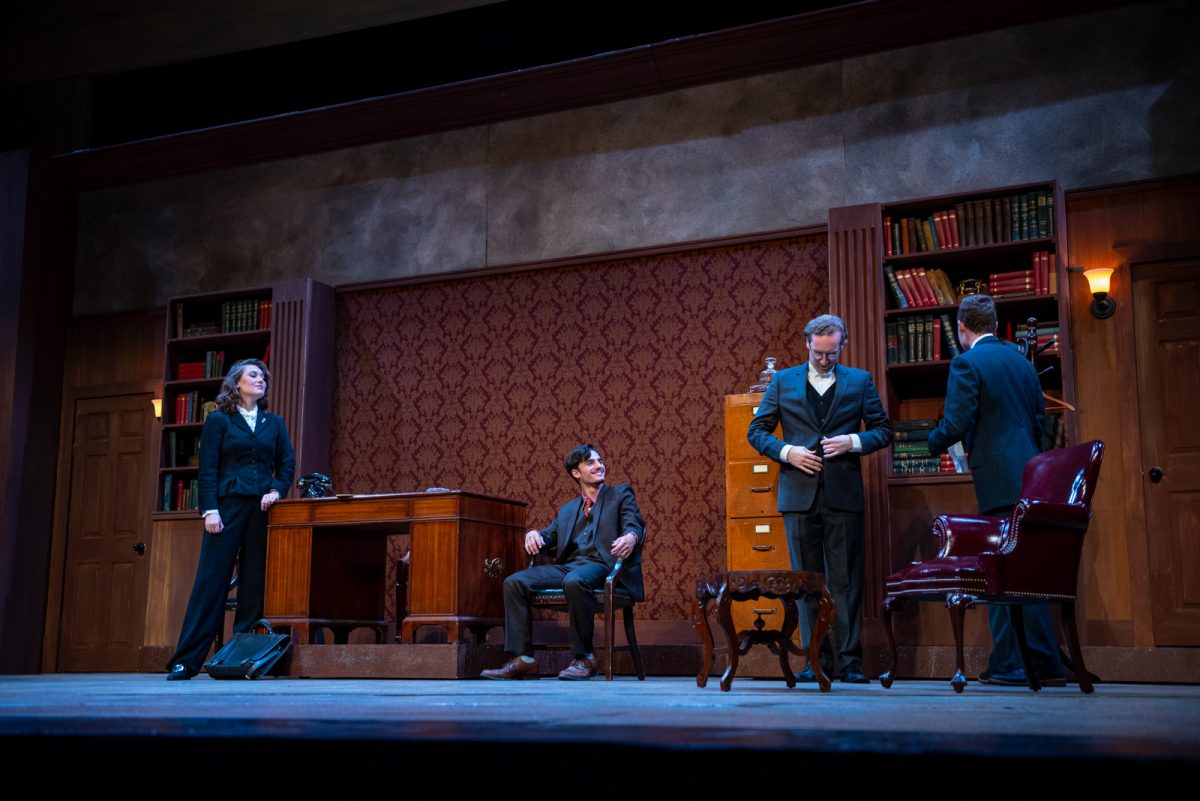
First-year Emma Engle, a member of the wardrobe crew underneath Costume Designer Alice Barsony, shared insights into the meticulous attention to detail behind the scenes.
Engle explained the use of black cream-based makeup to enhance the mustaches of male crew members, contributing to the immersive detective noir ambiance. Moreover, Engle underscored the necessity of layering stage makeup to allow actors to convey emotion and facial expressions effectively underneath “the unforgiving harshness of the stage lights.”
As the final gavel fell in “Witness for the Prosecution,” the audience was left dissecting more than just the guilt or innocence of Leonard Vole. This riveting courtroom drama, masterfully rendered on the Tedford Stage, proved itself a tapestry of deception and intrigue, illuminated by the brilliant performances of its cast.
Souza’s Robarts navigated the complex web of truth and deceit with tact, leaving the audience pondering the blurred lines of justice. “Witness for the Prosecution” not only captivated us with its enigmatic narrative, but also compelled us to question the nature of truth and the shadows it casts, making it a production that will not easily be forgotten.
The Wake Forest Theatre production of Agatha Christie’s courtroom drama commemorates the retirements of Sharon Andrews — who served as director for Wake Forest Theatre productions 25 times — and Mary Wayne-Thomas.


